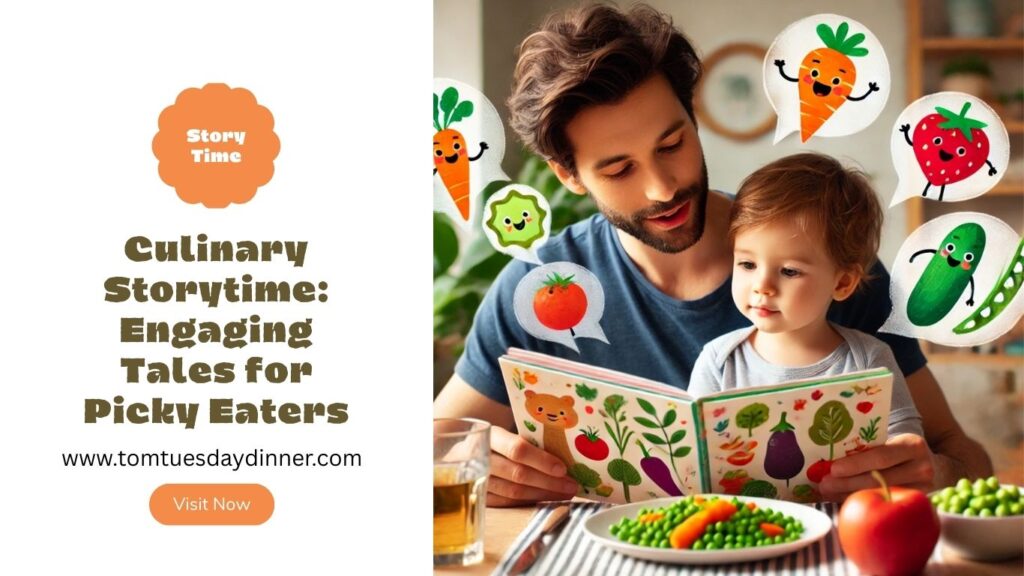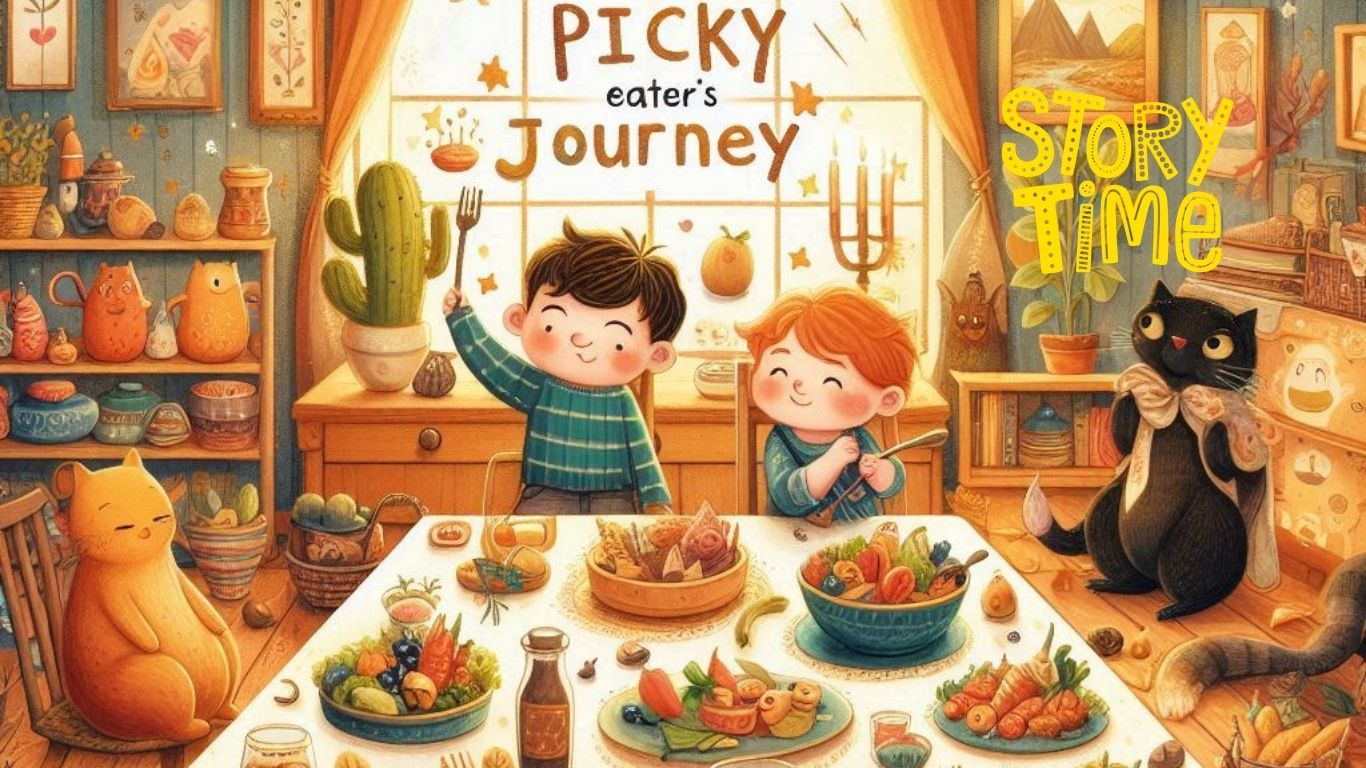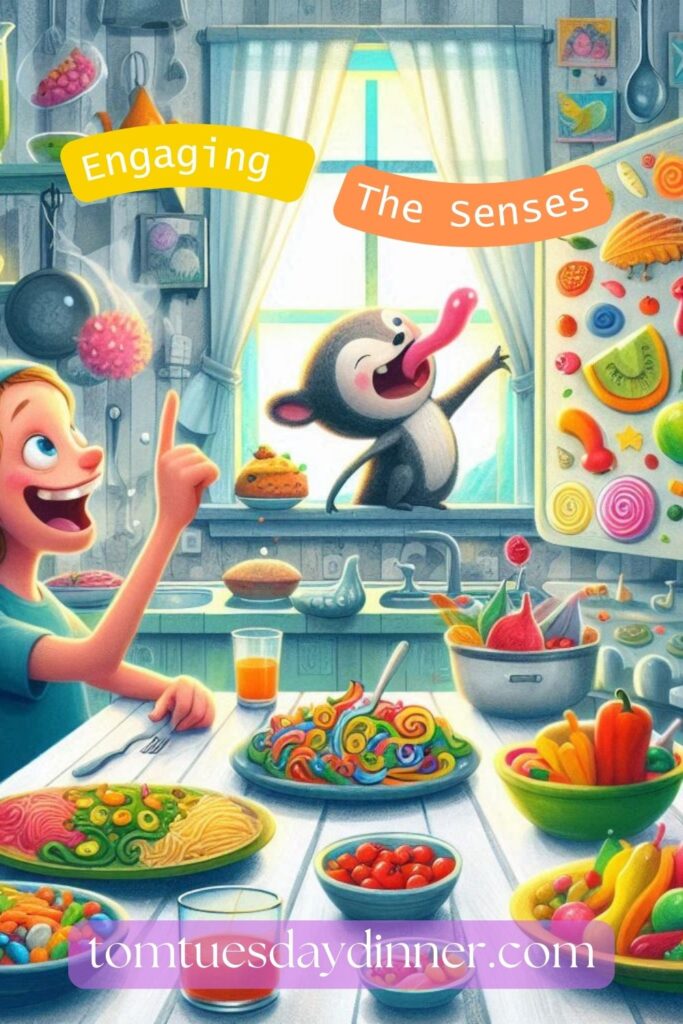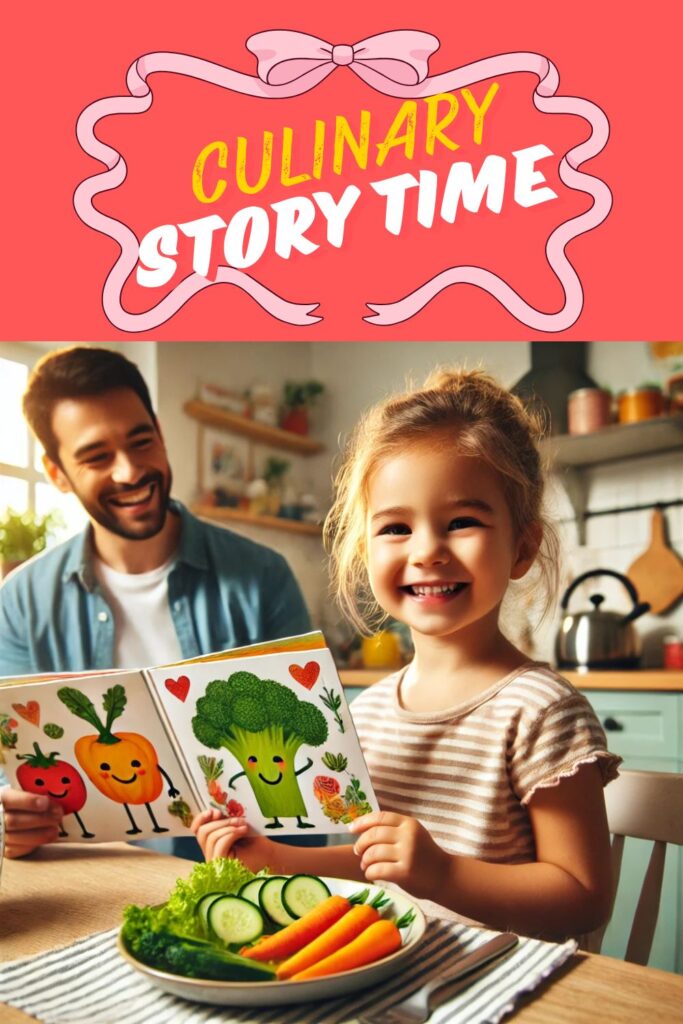We use affiliate links. If you purchase something using one of these links, we may receive compensation or commission.

Discover how culinary storytime can help picky eaters embrace new foods! Learn how to start story time at mealtime and explore the benefits for healthy eating habits in children.

Why Culinary Storytime Works for Picky Eaters
In today’s fast-paced world filled with sugary snacks and screen time, getting kids excited about vegetables can feel like a superpower. If your little one turns up their nose at anything green, you’re not alone. But what if mealtime could become an adventure instead of a struggle?
Culinary storytime is a playful, powerful way to help picky eaters explore new flavors and develop healthy eating habits for children—one story at a time.

What Is Picky Eating, and Why Does It Happen?
Picky eating usually means a child refuses to eat certain foods or has a very narrow list of favorites. It can stem from:
A natural part of child development
Sensory sensitivities to texture or smell
A lack of exposure to variety
While it’s common, it’s also important to guide children toward a more balanced diet to support growth, development, and overall well-being.
🍽️ The Power of Storytelling at Mealtime
“Storytelling enhances mealtime experiences, helping children explore new foods in a non-threatening way.”
— Dr. Jane Doe, Child Psychologist
Children are naturally curious. When they hear stories featuring foods and characters who love them, they’re more likely to give those foods a try themselves.

🧁 How to Start Story Time During Meals
Ready to create your own culinary adventure at the dinner table? Here’s how to get started:
1. Pick Age-Appropriate Food-Themed Books
Books like Green Eggs and Ham or Cloudy with a Chance of Meatballs spark curiosity about food in fun and familiar ways.
2. Tell Stories Featuring Food
Make up your own stories where the hero tries a new food and gains a superpower — even if it’s just the strength to play longer!
3. Engage the Senses
Use bright veggies for color
Explore different textures (crunchy, smooth, creamy)
Add herbs or spices with unique smells
Make the meal a sensory-rich part of the story.
🎉 Benefits of Culinary Storytime
Using storytime to encourage better eating habits isn’t just fun — it’s backed by expert support:
Nutrition Education
“Culinary storytime nurtures a positive relationship with food.” — Nutritionist John Smith
Better Food Acceptance
Stories reduce anxiety and help children feel safe trying new things.Positive Associations with Food
If broccoli is the hero’s favorite, your child might just reconsider it, too.
👨👩👧👦 Real Stories, Real Results
🗣️ Parental Win:
One parent shared that after reading about a dragon who loved broccoli, their daughter finally gave it a bite — and asked for more!
🏫 Preschool Success:
A preschool introduced weekly “food adventure” stories. Kids were soon excited to try new dishes tied to the tales.
👩⚕️ Expert Insight:
Pediatrician Dr. Emma Johnson notes, “Story-based strategies have lasting effects on a child’s diet and relationship with food.”
🛠️ Troubleshooting Tips for Picky Eaters
Every child is unique. If culinary storytime doesn’t click right away, try:
Letting your child help prepare meals
Giving choices within healthy options
Keeping the pressure low — no forcing bites!
Patience, consistency, and creativity are key.
🏁 Conclusion: Make Mealtime Magical
Picky eating doesn’t have to be a battle. With a little imagination and storytelling, you can help your child explore a world of tastes, textures, and healthy habits.
So grab a book, cook up a tale, and let the culinary storytime adventure begin!




















